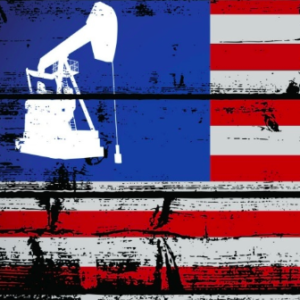Tensions in the Middle East escalated to a tipping point earlier this month when Iran launched ballistic missile attacks on U.S. and coalition military forces in Iraq. The offensive, which the regime acknowledged as retaliation for a U.S. drone strike days earlier that killed Iranian general Qasem Soleimani, commander of the elite Quds Force, brought relations
President Trump took steps to defuse the situation, calling on NATO members to address Iran’s international meddling, but stopping short of further military engagement. He made clear our commitment to preventing Iran’s nuclear ambitions, while offering a path toward peace and prosperity if the regime will stop its campaigns of “terror, murder, mayhem.”
The president’s response demonstrates the United States’ global leadership and commitment to peace through focused deterrence. And it left no doubt that America will no longer abide Iran’s rogue antagonism, which for decades was emboldened by years of reluctant toleration.
Only last year, Tehran downed a U.S. surveillance drone, which drew criticism from policy hawks at home that the administration did not respond firmly enough. Just months later the Iranian government launched a missile strike against two Saudi oil facilities, which temporarily disrupting the flow of about 5 percent of the world’s supply. Earlier last year, Iran targeted U.S. oil tankers with mine attacks in the Strait of Hormuz, a critical shipping lane for about 20 percent of the world’s oil.
On December 27, Iranian proxies — trained, rehearsed and inspired by Soleimani — launched an attack on the U.S. Embassy in Bagdad. Following the embassy attack, Soleimani brazenly stepped off a plane in Baghdad International Airport and was welcomed by the Iraqi leader of one of Iran’s Iraqi-based militias. This was Soleimani’s final act as the leader of Iran’s Quds Force. He was killed minutes later in a precise drone strike.
Some commentators have sought to spin Soleimani’s death as unwarranted, portraying him as merely a national figurehead. Let’s not forget this was a fiercely anti-American leader who trained and equipped terrorist groups to export terrorism within the Mideast and beyond.
It is unlikely a coincidence that Soleimani was in Bagdad at the time of the attack on the U.S. Embassy. The Wall Street Journal reported that this attack was the 11th time in two months that U.S. forces were targeted by Shiite militia groups. Soleimani was busy doing his job … trying to kill Americans and exert his frightening influence over political life in Baghdad. He was a monster.
The president’s strike on Soleimani sends an unequivocal message to Iran, and bad actors across the region that our country is committed to ensuring harmony in the Middle East. And, unlike only a few years ago, the United States is well equipped on the home front to uphold that pledge thanks to domestic shale development, which has effectively defused one of Iran’s greatest armaments — its grasp on the world’s oil spigot.
In just more than a decade U.S. oil production has more than doubled, from 5 million barrels per day in 2008 to nearly 13 million barrels per day at the end of last year. In 2018 America briefly exported more energy than it imported for the first time in 70 years — an accomplishment that our country is predicted to achieve and sustain again this year. As the president noted in his remarks, the United States is now the top producer of oil and natural gas in the world.
Yet, the United States’ continued energy growth is hardly guaranteed. New technologies have unlocked entirely new production frontiers — enough to power our country for the next 80 years. But much of the new output is coming from reserves that only a decade ago were just coming online.
That growth requires new pipelines, the safest and most effective form of energy transportation, to keep products moving from well sites to consumers. Yet, output remains well ahead of capacity in many areas, like West Texas’ Permian Basin, where bottlenecks have been so severe that drills have had to pay buyers to take natural gas off their hands. In other areas pipeline shortages prevent products from reaching consumers, like in the Northeast, where energy prices are known to spike during harsh winters despite proximity to the Utica and Marcellus shale plays.
In order to uphold its role as a global force for good, the United States cannot overlook its energy security at home. As the president and his advisers begin to address Iran’s reckless aggression, domestic policymakers on both sides of the political aisle would be wise to prioritize our energy infrastructure. If there is a silver lining to the otherwise alarming circumstance in the Middle East, it may be that the situation will renew focus on the importance of establishing America’s long-term energy independence.

